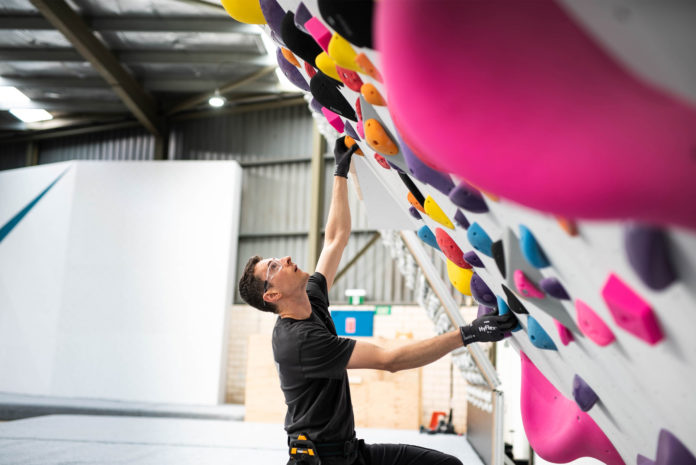
Behind the Desk… is an ongoing series that interviews people influencing and advancing the climbing industry. Continuing our latest global coverage, which previously highlighted gyms in Canada and South America, we recently ventured across the world—virtually—to Australia. There, 9 Degrees just opened its fifth gym on August 1, a bouldering facility in Sydney known as 9 Degrees Waterloo. Other 9 Degrees locations include Alexandria, Parramatta, Lane Cove and Enoggera. We connected with Jack Masel, behind the desk as Manager & Head Routesetter at 9 Degrees Waterloo, to get the scoop on the new Waterloo facility and chat about the history, heritage and future of the Australia climbing gym scene.
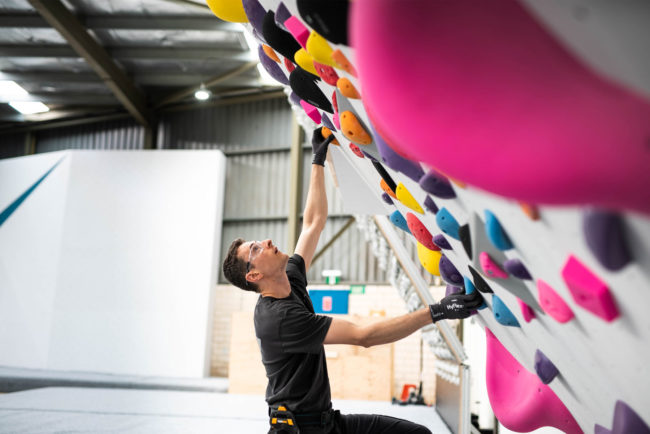
Name: Jack Masel (@jackmasel)
Title: Manager/Head Routesetter
Gym: 9 Degrees Waterloo (@9degreeswaterloo)
Location: Sydney, Australia
CBJ: Let’s start with some foundational details. Can you give me some history of the climbing gym scene in Australia? Gyms first started popping up in the USA around the mid/late 1980s, so I’m wondering if Australia followed a similar timeline?
MASEL: From what I can gather, the first commercial gyms in Australia opened on the east coast in the early 90s—typically rope-only gyms or with minimal bouldering. It wasn’t until much later that we got our first dedicated bouldering-only facilities. Even then it was a far cry from what we’ve come to expect from boulder gyms in recent years.
CBJ: When did you first start climbing, and what was your own climbing progression like?
MASEL: I started climbing at age 15 or 16 when one of my high school teachers took a small group of us out top-roping at a sea cliff along the coast of Western Australia. Over the following years, I learned all I could about gear, knots and anchors so I could go top-roping at the local crags and quarries within driving distance of home.
It wasn’t until I was 17 or 18 that I started lead climbing and bouldering at the gym. It was through a friend there that I was introduced to the world of sport climbing outside, which changed the game for me and led to my first overseas climbing trip to Tonsai [Thailand] in 2005.
From ages 19 until 24 I got thoroughly distracted by my first full-time job and foolishly gave up climbing during that time. When I started back in 2013, however, it was with a renewed appreciation and enthusiasm. I quit my then job as a nightclub manager to study personal training in the hopes of better understanding the human body and ultimately how to improve at climbing. Although I never pursued a career in the fitness industry, it was the start of a new era for me and my rediscovered passion for the sport.
It wasn’t until 2016—at 27 years old—that I moved to The Blue Mountains in New South Wales in search of greener (steeper) pastures. Western Australia is mostly very flat and climbing areas are few and far between, especially for sport climbing in and above the 5.12 grade range. I picked up some routesetting and coaching work at 9 Degrees Alexandria in Sydney to help fund my newfound climbing lifestyle and eventually transitioned into a management and head-setting role when 9 Degrees expanded to open a second gym in Parramatta in mid-2017. Last year, after three years there, I was ready for a new challenge and set out on this latest venture to spearhead the opening of our newest gym, 9 Degrees Waterloo.
I’ve been living, working and climbing in New South Wales for the last four and a half years now and haven’t looked back. Although I live and work in Sydney, I still do the majority of my climbing in the Blue Mountains—about 90 minutes-drive away. It’s a world-class climbing destination and home to thousands of routes with room for plenty more.
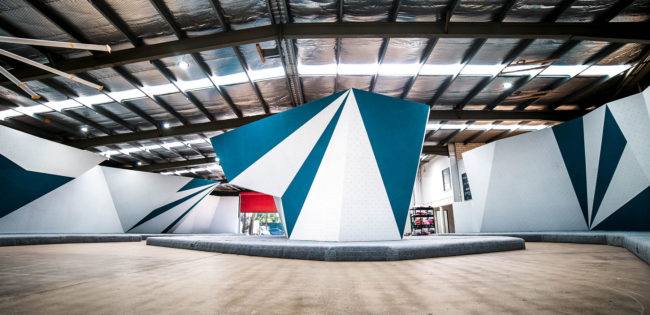
CBJ: There is a ton of world-class outdoor climbing in Australia, and I’m sure that influences Australia’s gym scene. What are some other assets of Australia and Australian culture that influence the gym scene and make it perhaps unique from other countries?
MASEL: While yes, there is undoubtedly some world-class climbing here in Australia, I think the once-obvious link between gyms and nearby outdoor climbing areas is diverging at an ever-faster rate. I know more people than ever who consider themselves a ‘climber,’ yet they have no intention of ever going outside to climb. Gym climbing has become its own sport. For better or for worse, the routes, and in particular, the boulders we set in the gym continue to trend further and further away from what a lot of people would consider to be anything much like ‘real’ rock climbing.
Looking at the numbers of climbers in the gyms here, I’m actually thankful for it. I can’t imagine having that number of people frequenting the crags and it being in any way sustainable long term…but that’s another discussion altogether.
What makes the Australian gym scene unique? I think two things: One is the climate. We do have seasons that are best for climbing, but it’s also possible to climb year-round. You don’t really see people training hard in the gym through winter and then taking time off from the gym in spring to redpoint.
The second one is that because we’re so isolated from the rest of the world, our style of routesetting is very much influenced by the big mix of media we see from overseas. I think the modern boulder gyms here are probably most similar to the typical German-style bouldering gym, but we see lots of media from the US, UK and Japan too.
CBJ: This new gym is now the fifth 9 Degrees in Australia…that’s quite a collection of gyms! What have been some of the keys to successful expansion and opening multiple gyms?
MASEL: Being the first modern-style bouldering gym in Australia was huge, and having that headstart helped put us in a good position to start expanding before the gym landscape here became too competitive. Secondly, I think we did amazingly well with the location of our first gym in Alexandria.
Even now, after five years and four newer 9 Degrees gyms, Alexandria continues to outperform them all in terms of visitation, in particular, of first-time climbers. It’s hard to isolate any one key metric for success, but I think choosing a good location is vital. We’ve got our fingers crossed we’re onto another winner in Waterloo.
It’s great to see that as more gyms have opened, the climbing scene in Sydney has grown along with it. We’re yet to see a dip in attendance and are optimistic that even with multiple gyms opening in the area later this year, that trend will continue.
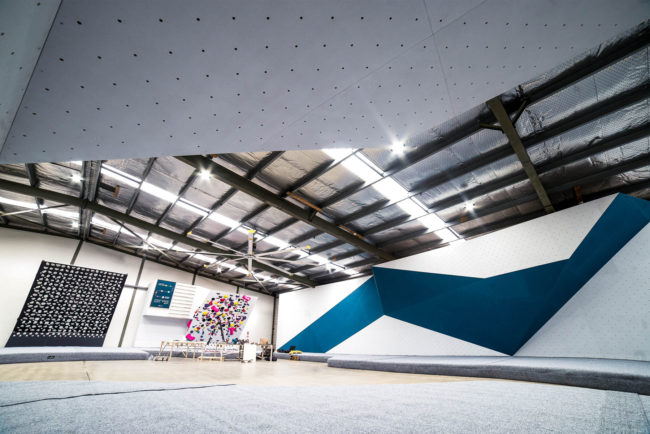
CBJ: Tell me a little more about the new Waterloo gym. This video mentions an old warehouse space—with some cracked skylights, old lights, cockroaches. What was the most challenging part of retrofitting a really old building to become a state-of-the-art climbing gym?
MASEL: I think it comes down to cost. Trying to get the product you want without the price tag is always the biggest challenge. If you’re not limited by a budget you can do pretty much whatever you want with relative ease. We shop around a lot, get multiple quotes and really spend the time deciding what are the most important and noticeable improvements we can make that will positively impact on the customer experience without breaking the bank. Things like replacing old skylights with new (for more natural light), moving to LED downlights, polishing the concrete floors, and more recently installing carpeted mats—those have been some of our top priorities. We also took the time to design the boulder walls and general fit out in such a way that it not only feels spacious and bright but also in a way that ensured the vast majority of the old warehouse features were hidden behind a new façade.
CBJ: On a related note, this has been a really unprecedented time for the global climbing industry with COVID. Can you tell me how your new gym’s opening has been impacted by the pandemic crisis, specifically?
MASEL: When COVID-19 hit Australia, the government enforced a large number of mandatory closures across multiple industries that included all gyms and fitness centers. The immediate loss of almost all revenue across our four existing venues was a situation I don’t think anyone was prepared for. Already heavily invested in this newest expansion, we had to first assess whether or not our existing gyms would survive, and only then consider if Waterloo was still feasible given potential complications associated with overseas manufacture, shipping, construction, etc.
We were fortunate that the Australian Government was willing to provide some assistance to small businesses like ours in the form of mandated rent relief from landlords at our existing sites and providing the majority of our staff with wage subsidies. We were also lucky that our walls and matting system had already left their destination by sea and could continue their journey mostly unhindered by the pandemic unfolding worldwide. In the end, our setbacks were limited and we were only a month or so behind schedule, if that.
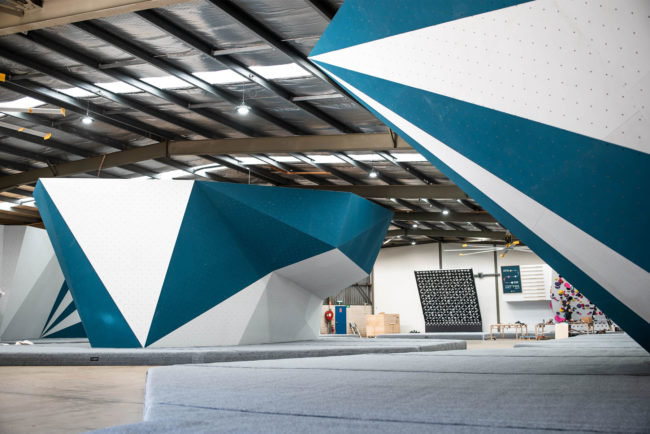
CBJ: Tell me the ideal story of what the first year looks like for this new gym?
MASEL: Some people may be familiar with our slogan: ‘Bouldering makes you happy.’ The drive behind creating the 9 Degrees brand has always been about sharing the joy of climbing and bouldering with as many people as possible. Building and operating a bunch of boulder gyms has been an amazingly rewarding way for us to do just that, and I hope Waterloo will be more of the same.
With that in mind, my vision for an ideal first 12 months in Waterloo would be focused around creating a welcoming space that inspires and motivates people of all skill levels to enjoy bouldering. Being located in such a densely populated area close to the city is a unique and exciting opportunity to be seen by larger than usual numbers of people currently outside the existing climbing scene.
The success of most modern bouldering gyms, I believe, is in large part due to the social aspect of the sport. Despite these undeniably turbulent and uncertain COVID-related times, providing an environment where people feel comfortable and happy relaxing—even when they’re not climbing—is another one of my core goals for the new gym.
Climbing-wise, we’re working to create visually striking boulders and circuits that guide and facilitate continued improvement in our regular customers. Happiness in climbing (and in life) comes from many different things, but one undeniable source of happiness, I believe, comes from a feeling of progress. Through a thoughtful and purposeful approach to routesetting we aim to strike the balance between giving people enough of what they know and like tempered with just the right amount of pushing people outside their comfort zones and into situations where they’re forced to learn, adapt and grow.
It’s hard to predict what to expect out of the next 12 months. Despite COVID still looming so ominously and no clear path to a COVID-free world in sight, I’m still optimistic about the new gym—but am very much looking forward to getting back to ‘normal,’ as are most people…especially fellow climbing gym managers and owners, I imagine.
Share your story
Are you leading a climbing gym or brand through this unprecedented period? Or, do you work in the industry and have a story that others could benefit from hearing? If so, please contact us and tell us about it.

John Burgman is the author of High Drama, a book that chronicles the history of American competition climbing. He is a Fulbright journalism grant recipient and a former magazine editor. He holds a master’s degree from New York University and bachelor’s degree from Miami University. In addition to writing, he coaches a youth bouldering team. Follow him on Twitter @John_Burgman and Instagram @jbclimbs. Read our interview Meet John Burgman, U.S. Comp Climbing’s Top Journalist.








